If you’re stuck choosing between the Mercedes C 220 d T-Model and the BMW 320 d Touring xDrive, you’re not alone. This is the kind of choice that gets car lovers and families equally curious—and a little bit torn.
Both of these cars have their own fan base. They come from proud German lineages, are stuffed with technology, and are as practical as they are stylish. In this comparison, we’re diving deep—no fluff, no jargon—just real talk. By the end, you’ll know which model suits your life better. So grab a cup of coffee and let’s break Mercedes C 220 d vs BMW 320 d all down together.
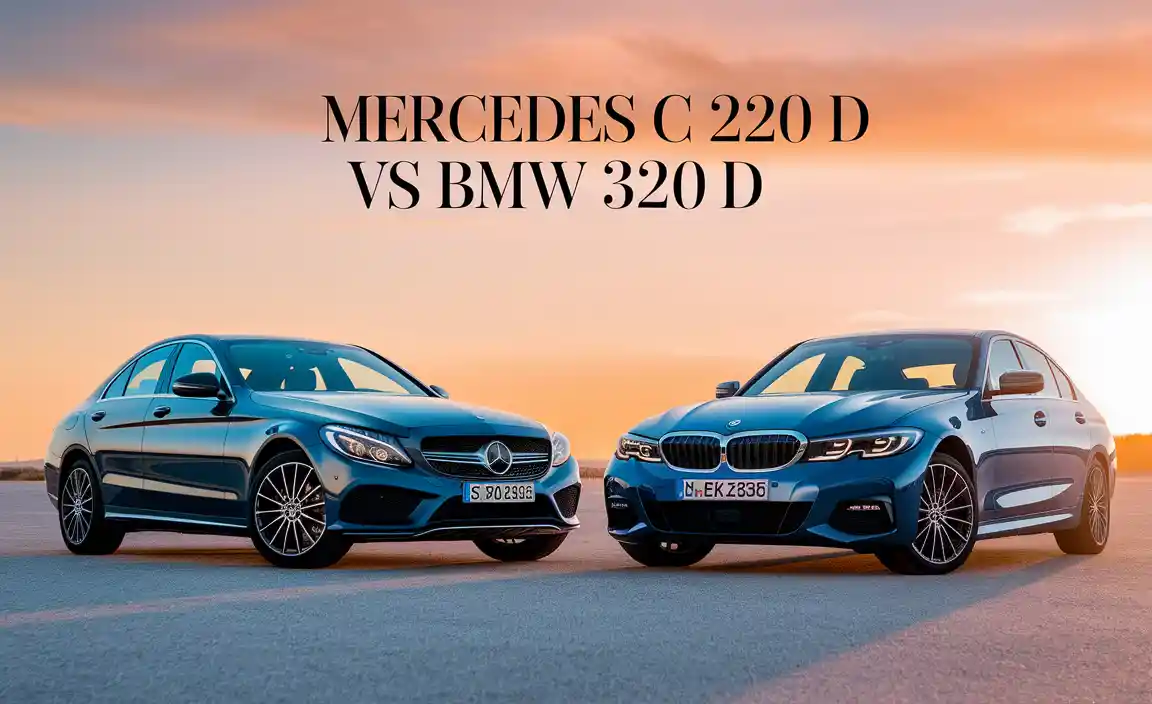
Mercedes C 220 D T-Model Vs BMW 320 D Touring Xdrive: At A Glance
Let’s kick off with a quick snapshot:
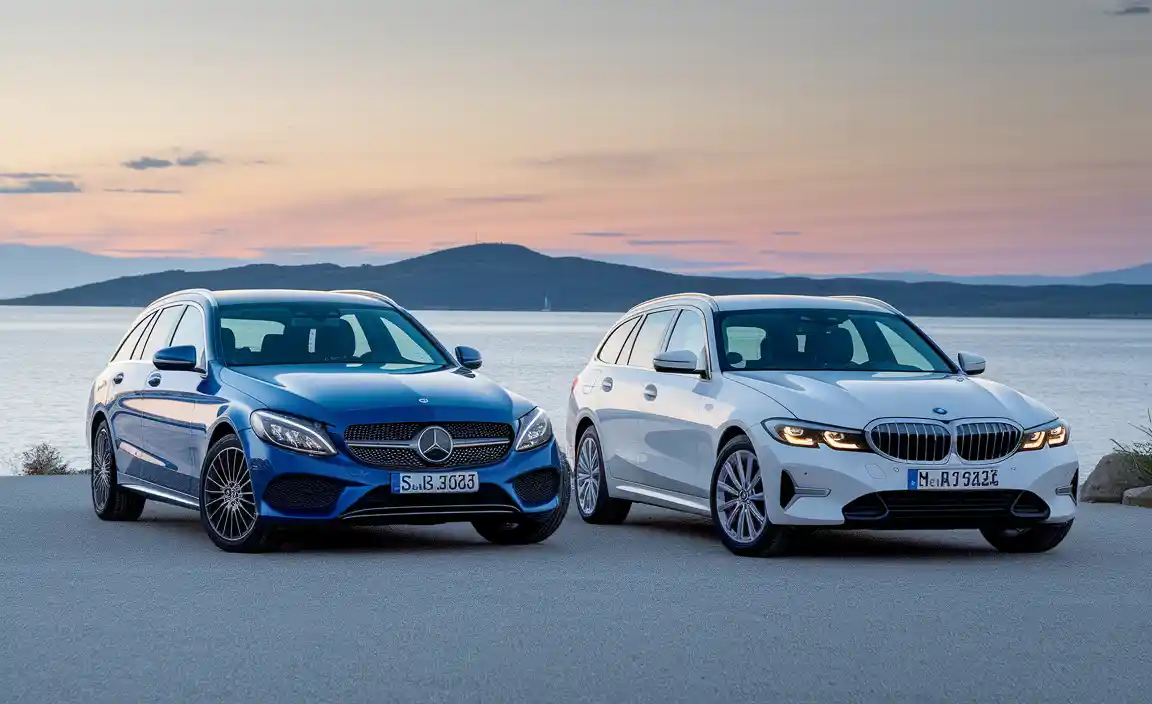
| Feature | Mercedes C 220 d T-Model | BMW 320 d Touring xDrive |
| Engine | 2.0L Diesel, RWD or AWD | 2.0L Diesel, xDrive (AWD) |
| Power | 200 hp | 190 hp |
| Torque | 440 Nm | 400 Nm |
| Transmission | 9G-TRONIC auto | 8-speed Steptronic auto |
| 0-100 km/h | 7.4 seconds | 7.5 seconds |
| Fuel Consumption (combined) | ~4.9 L/100 km | ~5.2 L/100 km |
| Boot Capacity | 490–1510 L | 500–1510 L |
| Starting Price | €51,000 (approx) | €50,300 (approx) |
Pretty close, right? But the real differences start showing once we dig a bit deeper.
Performance Comparison
Engine Specifications
The Mercedes-Benz C uses its trusted 2.0L diesel engine, paired with a smooth 9-speed automatic. The BMW 3 Series Touring, on the other hand, also uses a 2.0L diesel but leans on its xDrive all-wheel-drive system for grip and stability.
Both engines are efficient, but Mercedes packs slightly more torque and feels a bit stronger during overtakes.
Acceleration And Power Output
You won’t be racing these cars at Le Mans, but quick getaways from traffic lights or merging on highways? They’ve got you covered.
- C 220 d T-Model: 200 hp, 0–100 km/h in 7.4s
- 320 d xDrive: 190 hp, 0–100 km/h in 7.5s
Not a huge number difference, but the Mercedes feels quicker on initial throttle thanks to its extra power and clever gear mapping.
Handling And Ride Quality
The BMW 320 d Touring xDrive feels more “connected” to the road. It corners with that classic BMW sharpness. The Mercedes, though, is the king of comfort. On long drives or bumpy roads, it just glides. If your choice depends on dynamic feel, BMW wins. If it’s about smooth cruising? Mercedes takes it.
Fuel Economy Analysis
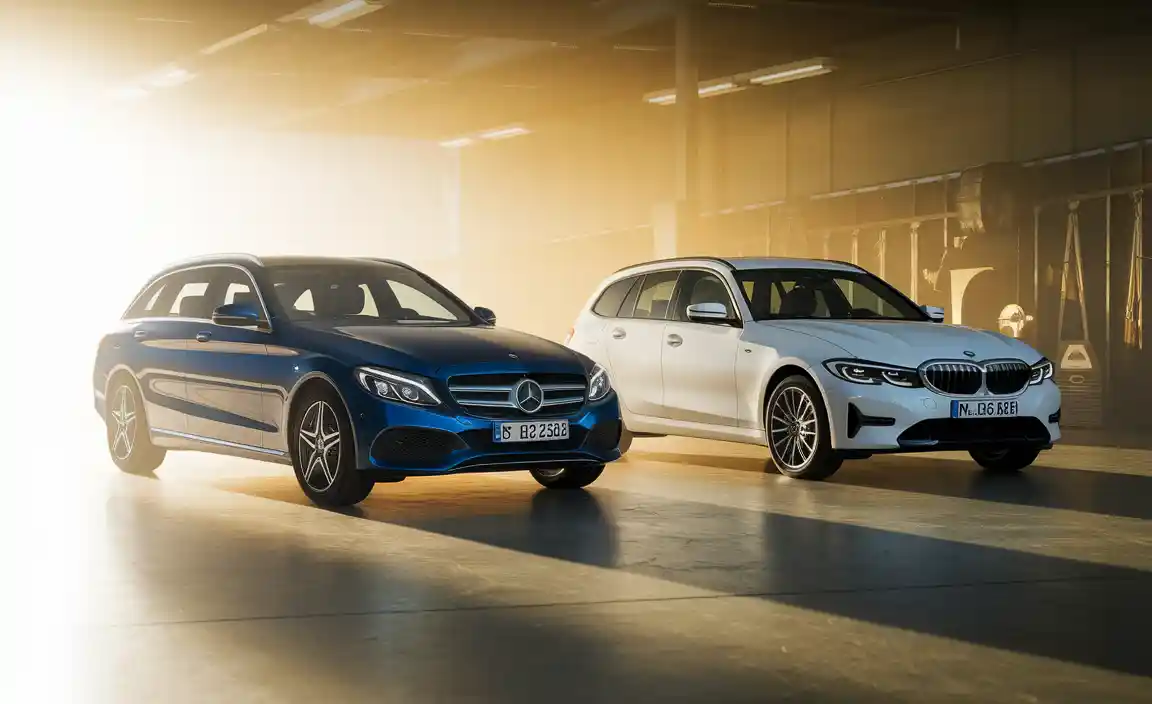
Mileage And Efficiency
For long-haul drivers or commuters, fuel economy is a big deal. Both these estates are efficient diesel runners, but the C 220 d T-Model has a slight edge, especially in eco modes.
- Mercedes: ~4.9 L/100 km
- BMW: ~5.2 L/100 km
That may not seem like lots, but over time, it adds up.
Urban Vs Highway
In city traffic, the BMW 320 d Touring’s stop-start system is sharp, while the Mercedes-Benz responds more fluidly in stop-and-go. On highways, both cars cruise effortlessly—but the C-Class sips a bit less fuel.
Design And Styling
Exterior Design Elements
Looks matter—let’s be honest. The Mercedes comes off as sleek, elegant, and slightly more understated. The BMW 3 Series Touring is bolder, with that signature kidney grille and sportier lines.
Design is a personal thing, but if you’re into timeless class, Mercedes wins. If aggressive styling is your vibe, the BMW might be your choice.
Color And Trim Options
Both brands offer deep customization—digital configurators, trim upgrades, and design packages galore. Want a matte grey with black wheels? Done. Prefer classic white with chrome trim? Easy. The variety is there—you just have to place your order.
Interior Features
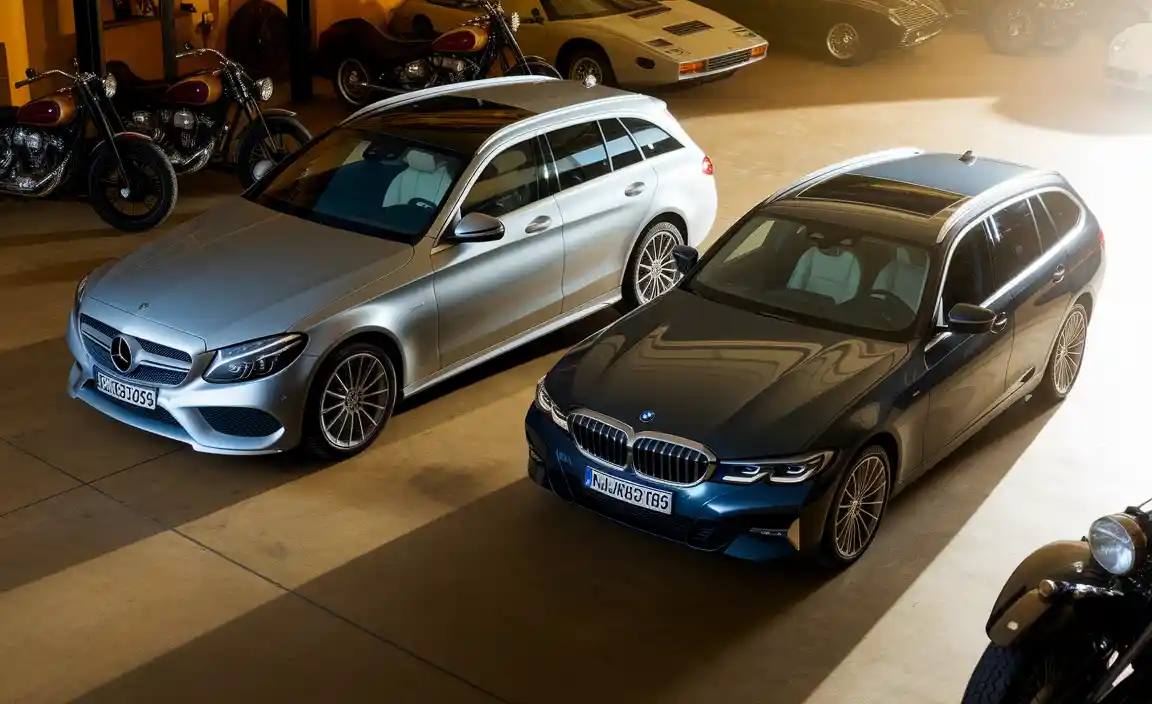
Cabin Design And Materials
Inside, it’s a battle of luxury. The C 220 d T-Model is all about softness and serenity. Leather, ambient lights, and floating screens set the mood. The BMW feels tighter and more driver-focused, with sporty accents and tactile buttons.
Seating Comfort And Space
Both offer comfy seats, but Mercedes takes the edge in overall plushness. Space-wise, they’re nearly identical, with ample headroom and great visibility. Rear passengers won’t complain in either—great for family car duties.
Infotainment And Technology
Display Interfaces And Controls
Here’s where technology shines. The Mercedes gives you a wide central touchscreen and a digital driver’s display. BMW answers back with its curved twin-screen layout and gesture control.
Both systems are modern, responsive, and packed with information—from navigation to vehicle status.
Connectivity And Features
Expect Android Auto, Apple CarPlay, Bluetooth, USB-C ports—everything’s standard. Mercedes’ system feels more luxurious; BMW’s is a bit more intuitive. Pick your poison: glam or geek.
Practicality And Dimensions
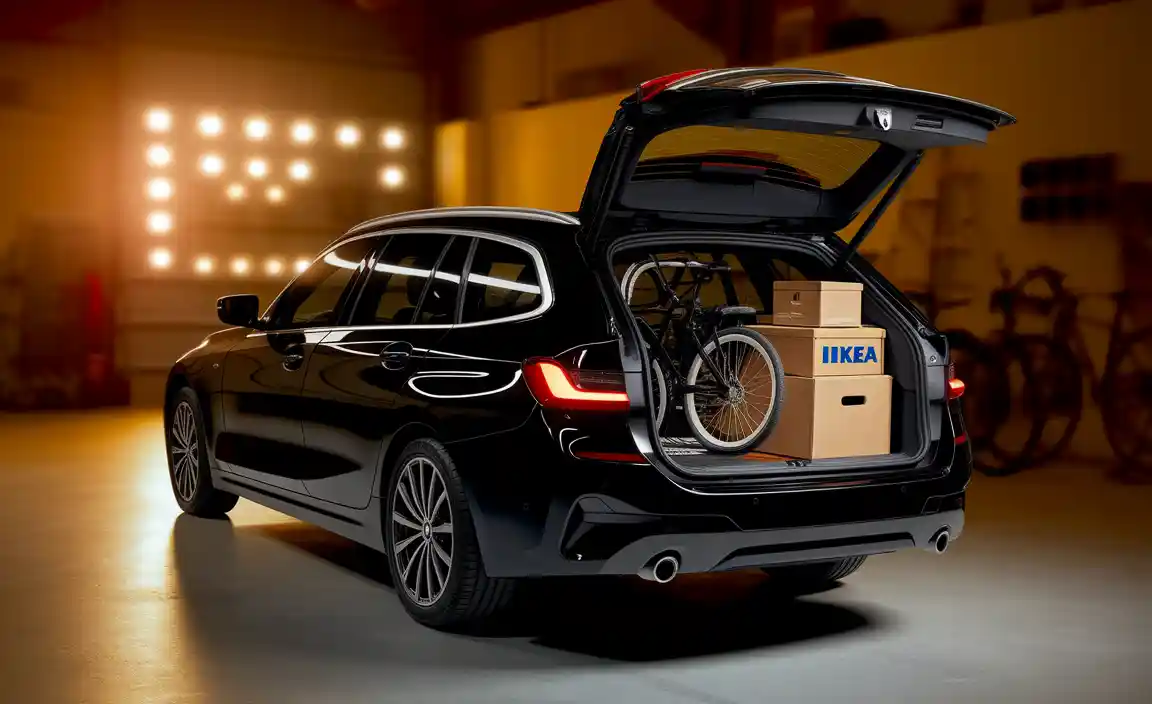
Boot Space And Cargo Capacity
Here’s where estate cars win hearts. The BMW 320 d Touring edges ahead slightly with a 500-liter boot (vs. 490 L in the Mercedes). But both expand to over 1500 liters with the seats down. That’s more than enough for bikes, strollers, or a weekend IKEA order.
Overall Size And Maneuverability
Despite their lengths (around 4.7 meters), both models are surprisingly easy to drive in the city. Mercedes offers rear-wheel steering (optional), which makes parking almost fun. BMW’s xDrive helps with grip in rain or snow but doesn’t add much in tight urban spaces.
Safety Features
Standard Safety Equipment
Mercedes and BMW both excel here. Standard kit includes collision avoidance, blind spot monitoring, lane assist, and adaptive cruise control. These systems are tested and refined—it’s not just for show.
Advanced Driver-Assistance Systems
Mercedes goes a bit further with its Driving Assistance Plus package. BMW’s Driving Assistant Professional package is nearly identical, but you’ll pay a premium for it. Either way, both meet top-tier Euro NCAP safety ratings.
Driving Experience
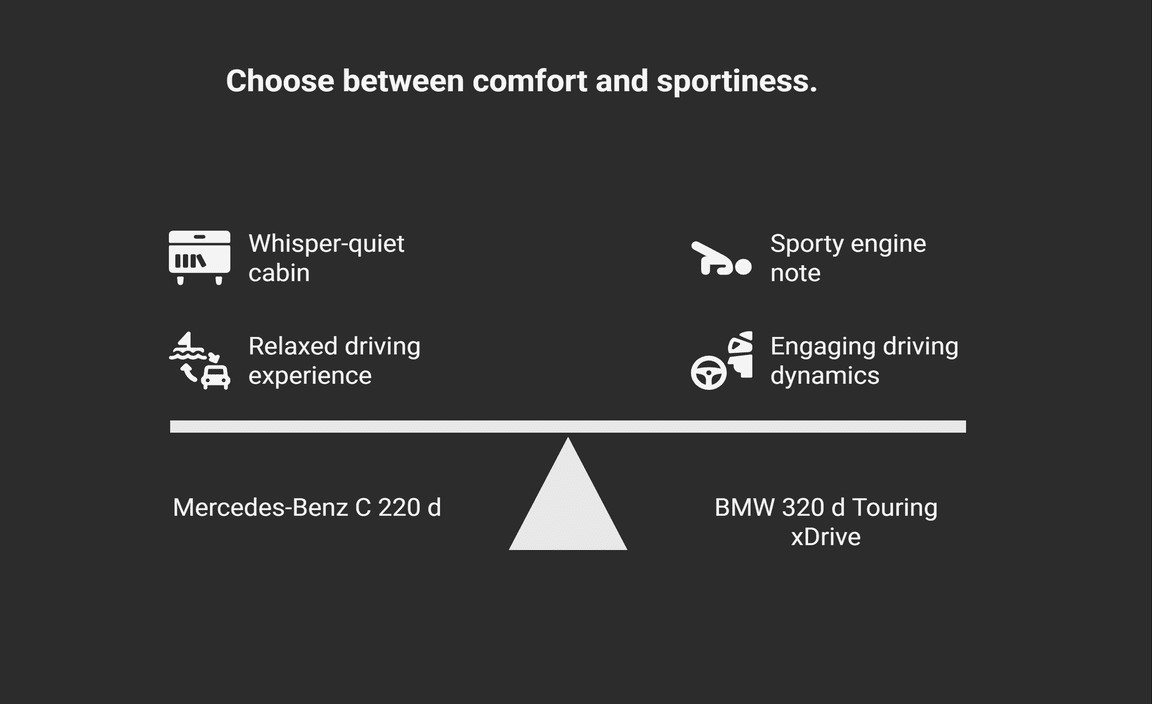
Noise And Vibration Levels
The C 220 d T-Model wins for peace and quiet. It’s whisper-quiet on the highway, with well-insulated cabins. BMW’s diesel note creeps in under heavy acceleration, which adds to the sporty vibe, but can get tiring on long drives.
Overall Driving Dynamics
The BMW 320 d Touring xDrive feels like a proper driver’s car. If you love being behind the wheel, it’s more engaging. The Mercedes? More relaxed, more calming. It’s like comparing espresso to chamomile tea—both great, just different moods.
Pricing And Value
Base Pricing Comparison
Both cars start just north of €50,000, depending on features. The C 220 d T-Model is slightly more expensive, but that price reflects its extra comfort touches and brand image. BMW offers a little more performance per euro.
Cost Of Ownership
Servicing, insurance, and fuel costs are fairly matched. Mercedes might cost a bit more in maintenance, but both brands offer competitive packages. Over five years, there’s no huge financial difference.
Financial Options
Both manufacturers offer finance, lease, and even subscription options. Whether you’re buying outright or spreading the price monthly, there’s flexibility. Look out for seasonal improvement deals and loyalty discounts—sometimes worth a few thousand euros off.
Final Verdict
So, what’s the better car?
If you’re looking for elegance, comfort, and that relaxed Mercedes-Benz vibe, the C 220 d T-Model is your match. It’s a refined family car with solid performance, smart design, and great technology.
But if you want a sportier feel, a tighter driving experience, and a more connected road feel, the BMW 320 d Touring x Drive might be your choice. It’s sharper, more playful, and better suited to active drivers.
In the end, both models are excellent examples of what premium diesel estates can be. Whichever series you choose, you’re getting a reliable, efficient, and tech-rich vehicle.
FAQs
1.Which Has Better Fuel Economy: C 220 D Or 320 D Xdrive?
The Mercedes C 220 d T-Model edges ahead slightly with about 4.9 L/100 km combined, while the BMW 320 d Touring xDrive averages around 5.2 L/100 km.
2.Is Mercedes More Comfortable Than BMW?
Yes, the Mercedes-Benz leans more toward luxury and comfort. It rides smoother and has quieter cabins, especially over longer journeys.
3.Which Car Is Better For Snowy Roads?
The BMW 320 d Touring xDrive has standard all-wheel drive, making it more capable on slippery surfaces.
4.Are The Infotainment Systems Similar?
Both cars offer high-end digital interfaces, but Mercedes feels more futuristic, while BMW’s is more intuitive.
5.Can I Fit A Large Stroller In The Boot?
Yes, both cars have spacious boots (around 500 liters), perfect for strollers, luggage, or camping gear.
6.Which Car Is More Fun To Drive?
The BMW has the edge in driving dynamics, thanks to its sportier setup and responsive handling.
7.Which Car Has More Torque?
The Mercedes C 220 d delivers 440 Nm of torque, compared to BMW’s 400 Nm.
8.Is The Mercedes More Expensive To Maintain?
Slightly, yes. Mercedes tends to have higher servicing costs, but both offer prepaid maintenance plans.
9.Which Has More Advanced Safety Systems?
Both score well in Euro NCAP tests and offer premium safety tech. Mercedes bundles a few more features as standard.
10.Which Is A Better Value Long-Term?
Both hold value well. Mercedes may offer stronger resale due to brand perception, while BMW shines in driver engagement.